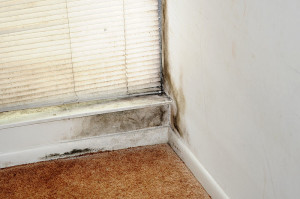 If you’re local to the San Francisco Bay Area, it’s no secret that the foggy, misty weather creates a particularly fertile environment for mold.
If you’re local to the San Francisco Bay Area, it’s no secret that the foggy, misty weather creates a particularly fertile environment for mold.
Karen Cohn, a program manager for the San Francisco Department of Public Health said in an interview with The Bold Italic, “We are in a moist, humid environment. We have an extremely old housing stock- the fourth highest number of pre-1978 housing in the country- and in old homes, windows were single pain and walls were badly insulated.”
With the Karl the Fog knocking on the door almost every night, our homes and apartments are particularly susceptible to mold overgrowth. And along with this mold overgrowth comes allergic and asthmatic reactions.
What exactly is mold?
According to the American Academy of Allergy, Asthma and Immunology, molds are tiny fungi whose spores float through the air (similar to pollen). If you have an allergy to mold and inhale the spores, you will have an allergic reaction.
Mold needs four things to grow: food, air, appropriate temperature and water. It can be found outdoors on things like decaying logs, leaves, compost and grasses. Indoors, mold can be found where there is lots of moisture, which is most likely, the kitchen, bathroom or basement.
Allergic reactions to mold can be similar to typical hay fever symptoms:
- Sneezing
- Runny or stuffy nose
- Itchy throat, eyes or ears
- Hives
- Swollen eyelids
Other common symptoms are:
- Post nasal drip
- Cough (especially worse at night)
- Wheezing and/or shortness of breath
- May make your asthma worse
If you are experiencing any of these symptoms, especially if your home or workplace is susceptible to mold, there are some steps you can take to find relief.
Come to Advanced Allergy Solutions for a mold treatment. We see many patients suffering from a mold allergy (we are located in San Francisco after all!), so it’s something we treat often. Our patients have had very successful results with this treatment.
You can also reduce the amount of mold in your home by cleaning regularly, especially in dark, damp places. Some good places to start are the garbage cans, sinks, refrigerator, cupboards and removing stacks of old newspapers or books. Be sure to fix leaks as soon as possible too, as this will help prevent mold from growing.
If you have been suffering from these symptoms, come in for a treatment and look around your home to see if mold may be growing.
We look forward to helping you feel better!
